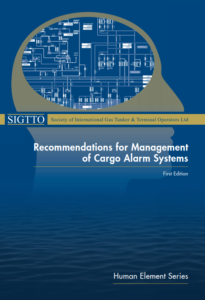The Society of International Gas Tanker & Terminal Operators Ltd (SIGTTO) published the first output from the Human Element Committee, ‘Recommendations for Management of Cargo Alarm Systems’, recommending the implementation of alarm management philosophies for cargo alarm systems on gas carriers.
The purpose of these recommendations is to encourage owners to create an alarm management system that will address the design, management and operation of alarm systems. Owners may find valuable assistance from Classification Societies, alarm system designers and shipyards.
This document provides guidance for all types of gas carriers, from large LNG carriers to the smallest LPG carriers. All gas carriers will need to have alarm management processes, but less complex alarm systems will be easier to set up.
Thus, the recommendations are about cargo monitoring and safety systems on liquefied carriers.
According to SIGTTO, today’s cargo monitoring systems can be virtually programmed with an unlimited number of alarms. These systems are bale to generate a large number of alarms, in the event of an unusual situation. This is also called ‘alarm flooding’. This can disable the alarm system and may contribute to incident escalation.
In addition, according to the publication, chattering, fleeting and stale alarms can decrease the efficiency of the cargo alarm system. Thus, the operator should quickly check the status of the cargo system. The data gathered should be grouped and presented in a specific way to make it easy for the operator to react to each situation appropriately.
As SIGTTO reported
Alarm management is a systematic process that covers all typical issues found with modern alarm systems.
Moreover, alarm management is a comprehensive process addressing design, maintenance, training and audit aspects.
Yet, alarm management is not a one-time process, since the procedures and settings will need to be reassessed over time. Audit review and management of change are important parts of this improvement process.
The Society also highlights that the recommendations aim only new vessels.
These recommendations do not apply to existing ships and there is no suggestion that existing ships should be altered in any way.
For more information you may click on the PDF herebelow































































